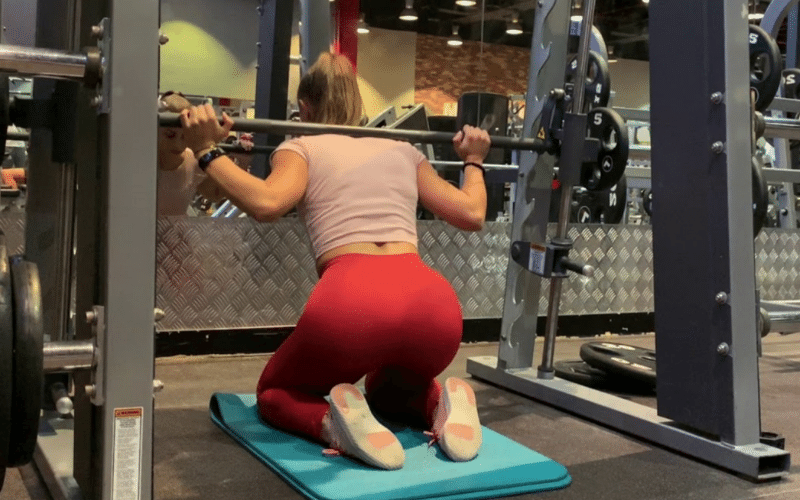Table of Contents

The Kneeling Squat is a great functional movement for developing lower body strength and stability. It closely simulates the movement pattern of how we first learned to stand up on our own two feet as children.
Kneeling Squat Muscles Worked
Primary muscles worked: Quadriceps, Gluteus, Hamstrings Secondary muscles worked: Abductors, Abdominals
The Kneeling Squat is also a great stretch for the inner thigh and groin area. Although you might not feel the stretch in these areas at first because of using them during the exercise, your mobility increases every time you perform the exercise.
Main Health Benefits
The kneeling squat is a functional movement pattern that helps strengthen the musculature needed to stand on one’s own two feet! It is also great for developing lower body stability, coordination, and balance and provides a tremendous stretch in the abductor (inner thigh) and groin regions.
How to Perform the Kneeling Squat
Kneel on the floor with your toes tucked under Keep your chest up and spine in neutral alignment. Reach forward leading with your hips, not just your back.
Bring your heels together to touch. Stretch in this position for 10 seconds. Return back to start position and repeat 5-10x.
How to Improve at the Kneeling Squat
Perform multiple sets of the exercise with a short break in between each set As you improve, perform single leg squats instead of double leg squats. Gradually lower yourself closer and closer to the floor until your heels begin to kiss the ground.
How to Make a Kneeling Squat Harder
Perform a one-arm squat with your opposite arm reaching out in front of you for balance Perform a single leg squat instead of a double leg squat. Gradually lower yourself closer and closer to the floor until your heels begin to kiss the ground.
Kneeling Squat with Balance Disc
If you’re ready to go to the next level and increase your strength and balance, try doing the kneeling squat while standing on top of a balance disc.
This will provide you with an unstable surface that increases your core stability requirements. You can also use an exercise ball instead of a balance disc.
Kneeling Squat with Band
Another way to make the Kneeling Squat harder is by performing it with a resistance band. It doesn’t provide as much tension as an exercise ball but it’s great for making things more challenging and fun!
Dumbbell Variation
We recommend holding a dumbbell in each hand, resting them on your thighs while you perform the exercise.
If this feels too challenging, try doing it without any added weight or resistance first and gradually add weight once you become more proficient at the movement pattern.
Effectiveness
Yes! The Kneeling Squat is an excellent functional movement pattern that strengthens the lower body and challenges balance.
It also provides a great stretch for the inner thighs and groin area as well as improving your posture and coordination.
Kneeling Squats seem to be here to stay as more and more people are adding this exercise to their fitness programs to improve performance, prevent injuries, increase lower body strength, and improve stability.
Are Kneeling Squats Bad for Knees?
Kneeling squats are bad for your knees if you suffer from anterior knee pain or any type of knee injury and should be avoided until your doctor says otherwise.
However, most people with healthy and uninjured knees can perform kneeling squats without experiencing any issues when done with proper form.
Alternatives
Squats with Resistance Bands
Sit on an exercise ball and perform a regular squat. Hold the resistance band in both hands and pull it apart to provide you with added resistance so that your muscles have to work harder than usual.
You can also hold the ends of the band in both hands at shoulder level for more stability and support.
[wp-stealth-ads rows=”2″ mobile-rows=”2″]

